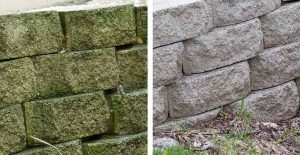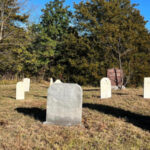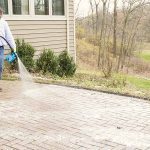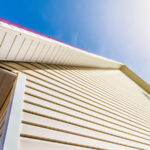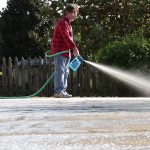How to Clean Fencing and Retaining Walls with Wet & Forget
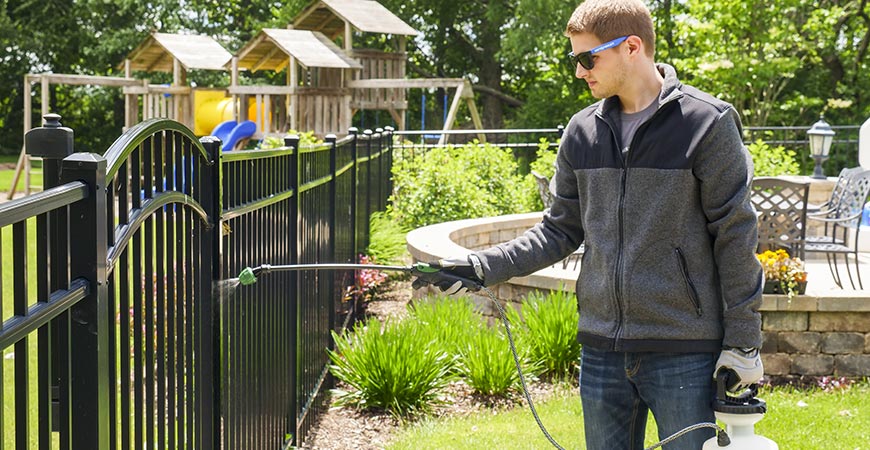
Fencing and retaining walls ensure privacy and deter unwanted visitors. Whether you wish to keep your children safe in your yard or keep neighborhood pets out of the garden, there’s a fence or retaining wall perfect for your property.
Here we’ll cover how to clean fences and retaining walls with Wet & Forget, and how to pick out the best type of fence or retaining wall for your property.
Is one type of fence or retaining wall more prone to growth compared to others?
A natural material with a porous surface, such as wood or stone, is more susceptible to unsightly growths than a fabricated material with a slick, non-porous surface. The amount of humidity and shade can also contribute to the development of some types of growth.
For example, a shaded wood fence will develop growths quicker than a wood fence that receives plenty of sunlight.
What’s wrong with pressure washing my fence?
Most outdoor surfaces are unable to withstand the force of water under high pressure. So, pressure washing can degrade your fencing or retaining wall, causing splintering, chipping, or breakage.
Pressurized water can also create a muddy mess, flooding your lawn and landscaping.
Wet & Forget’s gentle, bleach-free formula cleans away ugly growths without damaging surfaces. Correspondingly, your fence, retaining wall, and other hardscape surfaces can stay clean and growth-free for up to a year or longer.
Renting a pressure washer is costly. Using Wet & Forget will save you money!
Which is the best Wet & Forget product to use on fences and retaining walls?
Wet & Forget Concentrate is ideal for treating fences and retaining walls where a precise application is essential.
Applying Wet & Forget Concentrate is quick and easy. In other words, just mix with water in a tank sprayer and spray the surface!
That’s it! No scrubbing, rinsing, or messy pressure washing.
Wet & Forget works over time with the rain and wind to gently remove ugly growths and can keep them away for up to a year or longer.
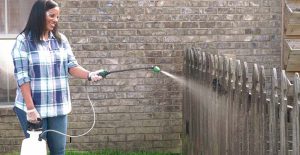
What are the most popular fencing materials?
Cedar is popular for its tight grain and resistance to warping and shrinkage, and for the lovely red hue. Furthermore, this type of wood is naturally resistant to decay and insects.
Cedar fencing naturally weathers to a silvery gray and requires regular maintenance. Protect cedar fencing by brushing on a penetrating sealant after installation and then on an annual basis.
Redwood or teak is one of the more expensive fencing materials, but the beauty of these natural woods helps make up for the price. Redwood and teak are usually limited to small enclosures such as patios or pool surround due to the cost.
Like cedar, both redwood and teak naturally resist decay, insects, warping, and shrinking. It’s best to apply a sealer or wood oil once a year or more to retain the wood’s original color.
Vinyl is a relatively new fencing material that was first introduced in the 1980s as a durable, low-priced solution. Early versions turned yellow in the sun and became brittle within a few years.
Today, fence manufacturers offer a wide range of durable vinyl fence styles. The thicker the gauge you buy, the longer it will last.
Usually, vinyl material is considered maintenance-free.
Treated wood is a natural wood that has been pressure treated or chemically treated to increase durability and resistance to insects, moisture, and the weather.
Unfortunately, treated wood fence posts and pickets tend to warp soon after installation. For the best results, handpick dry, straight planks at the lumberyard.
Avoid any planks that look “green” or damp as they tend to warp as they dry. Paint or seal treated wood fencing to make them last longer. Be sure to replace twisted or warped sections as needed.
Metal fencing includes wrought iron, aluminum, and galvanized steel.
A traditional and extremely durable fencing material, wrought iron enclosures are usually custom-made to fit the property. They can often be seen surrounding historic homes.
Fashion wrought iron into a myriad of decorative patterns and shapes. Strong and stately, this fencing material is one of the most elegant options available.
However, over time, wrought iron will develop rust in areas where the paint has chips or scratches. If rust appears, remove it with a piece of sandpaper and then apply a layer of paint.
You may need to re-paint the fence every ten years or so, especially in damp or coastal locations.
Checking your property lines and covenants
If you plan to install new fencing, give your local zoning office a call to find out about requirements to follow. You may need to have a survey done if you plan to place the fence along your property line.
However, if you live in a neighborhood that has covenants, there may be restrictions to using specific materials, or how high a fence you can build.
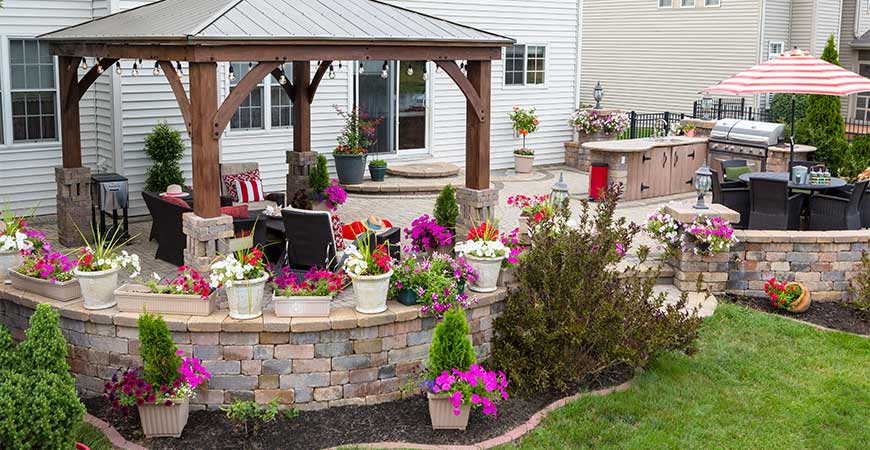
What are the most popular retaining wall materials?
Natural stone retaining walls fall into three main types: cut stone, rubble, and boulder. Stone material can be expensive, and stone walls require additional time and skills to build.
It’s best to limit a DIY stone wall project to 3 ft. in height. In case you want a higher wall, you may want to consider calling your local professionals.
Cut stone is available in several lengths and heights. Standard sizes are 8 inch and 12-inch widths. Natural stone will stack in rows, or in different heights for a varied look.
Build a gravel base to ensure good drainage. When stacking stone, step each row back 1 1/2 inches per foot of wall height.
Rubble retaining walls are built of random-sized stones that fit tightly together when stacked. A mix of various colors and stone types makes an attractive garden accent.
Begin your rubble wall with a wide base and step the stones back slightly as you go. Furthermore, make the wall narrower at the top.
To prevent settling, place gravel into remaining open spaces.
Boulder retaining walls are built of large stones that are fitted and stacked. The boulders are usually 8 inches or larger and very heavy.
Even the smallest stones can weigh 80 lbs. Fill gaps between the stones with small plants, or place landscape fabric behind the wall as you build to prevent dirt from washing through.
Concrete block retaining walls come in a wide range of textures, colors, and shapes to choose from. To get the best idea of how the wall will look, visit a hardscape retailer and look at a stacked wall on site.
Most manufacturers produce four styles: flat-face tumbled, weathered, and three-way split.
To build a retaining wall with concrete blocks, stack them on a compacted gravel base and then secure them in place with clips, pins, or interlocking edges. Concrete blocks come in two sizes:
- Garden wall size: 12 in. width x 4 in. height
- Full-size: 16 to 18 in. width x 6 to 8 in. height
If you wish to install a retaining wall over 4 ft. in height, consult a licensed engineer to ensure stability and strength.
Once you’ve decided on the type of fence or retaining wall that’s best for you and your budget, keep it clean and growth-free with Wet & Forget Concentrate.
To find a store near you, check out our Store Locator. In case you have any questions about Wet & Forget, please give us a call at 888-727-8524. We are here to help Monday through Friday from 8:30 AM to 5:00 PM Central Time.

